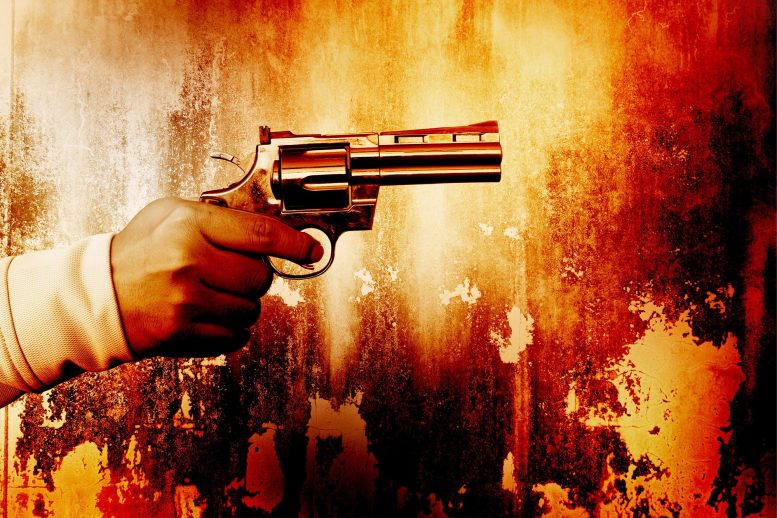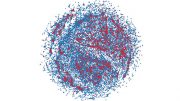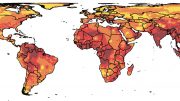
New research examined exposure to gun violence in the US, focusing on race, sex, and birth year. Researchers used longitudinal data from 2,418 Chicago participants to analyze exposure to shootings over 25 years. Findings revealed that Black and Hispanic communities experience significantly higher rates of direct victimization and witnessing gun violence compared to their White counterparts. Additionally, men were more likely to be shot than women, but the difference in witnessing gun violence was smaller. The study highlighted the need to address the devastating long-term developmental and psychological effects of gun violence on individuals and communities.
A new study reveals the significant racial disparities in exposure to gun violence in the US, with Black and Hispanic communities facing higher rates of direct victimization and witnessing shootings. The research highlights the long-lasting effects of gun violence on individuals and communities, emphasizing the importance of addressing this issue.
Exposure to gun violence is one of the great traumas of American life, but its harms are not equally distributed. In a first-of-its-kind study published on May 9 in JAMA Network Open, a Harvard sociology professor and his colleagues set out to examine exposure to shootings by race, sex, and birth year in a long-term study that followed respondents from childhood up to age 40.
“The idea here is to take a life-course perspective,” said Robert J. Sampson, the Woodford L. and Ann A. Flowers University Professor. “When is exposure to gun violence happening? How does that change over the life course? And how do those patterns vary by race, sex, and all the societal changes that are happening?”
These questions were tackled by analyzing longitudinal data on a representative sample of 2,418 participants from Chicago — half male and half female — who were born in 1981, 1984, 1987, and 1996. Four rounds of data were collected for up to 25 years. All in all, responses underscore the profound tolls on Black and Hispanic communities while surfacing new insights related to gender and birth year.
- Chicago Demographics:
- Population of approximately 2.7 million people
- Racial composition: 32.8% non-Hispanic White, 29.7% non-Hispanic Black, 29.0% Hispanic or Latino, 6.5% Asian, 2.0% other races or mixed race
- Notable racial segregation in neighborhoods
- Chicago Gun Laws:
- Strict firearm regulations in Illinois
- Firearm Owner’s Identification (FOID) card required for gun ownership
- Waiting periods for firearm purchases: 72 hours for handguns, 24 hours for rifles and shotguns
- Concealed carry permits allowed since 2013 with background check and 16-hour training course
- Chicago Gun Violence:
- High rates of gun violence and homicides despite strict gun laws
- Contributing factors: gang activity and poverty
- Chicago Politics:
- Long history of Democratic political dominance
- No Republican mayor since 1931
Making this study possible was the Project on Human Development in Chicago Neighborhoods, which Sampson helped launch in the mid-1990s to follow various birth cohorts. “One of the project’s advantages is the ability to disentangle age and life-course differences from what’s happening in society at large,” Sampson said. By now, the social scientist has drawn on PHDCN data for multiple papers and a book, with a forthcoming title arriving next year on the interaction of child and societal development.
For this study, Sampson and his co-authors found exposure to gun violence varied depending on when the respondent was born. Overall, exposure rises in adolescence, with 14 being the mean age of seeing somebody shot while 17 was the mean for being shot. “The oldest cohorts were quite disadvantaged,” Sampson noted, “because they came of age during the peak of violence in the United States and Chicago.” U.S. homicide rates topped out in the early 1990s, just as those born in the early ’80s reached their teen years. Around half of respondents born in 1981 and 1984 reported witnessing gun violence, while those who had been shot hovered around 7 percent.
As crime rates declined, subsequent birth cohorts faced less exposure to firearms. Those born in 1996 reported the lowest levels of seeing somebody shot – their exposure was half that of the two oldest cohorts – but direct victimization was another story. “Surprisingly,” Sampson added, “unlike witnessing violence, there was no statistical difference between the 1981 and 1996 cohorts in their risk of being shot.”
“In 2015 or 2016, violence in the United States, but particularly in Chicago, started to skyrocket,” explained Sampson, who noted that gun-related deaths peaked in 2021 – with nearly all homicides today being gun homicides. “As being shot tends to happen later in the life course, the youngest cohort all of a sudden faced a much higher risk.”
In terms of race, Sampson’s study confirmed previous research establishing racial disparities in exposure to gun violence. Black and Hispanic participants were more than twice as likely to be directly victimized. More than 7 percent of both Black and Hispanic respondents reported being shot by age 40. In fact, one Black PHDCN participant and one Hispanic PHDCN participant were fatally shot. In contrast, 3% of White participants reported being shot.
The numbers were similarly stark for witnessing gun violence. Fifty-six percent of Black respondents and 55 percent of Hispanics reported seeing someone shot, compared with 25 percent of Whites.
“You also see differences in the age distribution,” Sampson noted. “Gunshot victimization flatlines among the White population after age 21, whereas it keeps rising all the way up to age 40 for Black and Hispanic respondents.”
More surprising to the researchers were rates of exposure by sex, given all we know about men’s greater involvement in violence. Men were far more likely to be shot – 11 percent of male vs. 2 percent of female participants – but the differences were modest for witnessing gun violence (58 vs. 43 percent). For Sampson, this finding speaks to the prevalence of firearms in American life.
As a final step, Sampson and his co-authors drew from the Gun Violence Archive to map the proximity of each respondent’s residence to shootings. This approach revealed minimal differences by sex and age, but the racial gap again proved glaring. Black residents were far more likely than Hispanic and White residents to live in neighborhoods plagued by shootings, in addition to compounded adversities (like concentrated poverty) Sampson has shown in prior work. “But perhaps the greatest adversity of all is violence,” he said.
As Sampson pointed out, guns threaten far more than human life. Studies show that witnessing a shooting has long-term developmental and psychological effects that impact education, relationships, and employment. “The ramifying consequences are profound, which makes gun violence all the more important to pinpoint,” he said.
For more on this research, see 50% of Chicago Residents Witness a Shooting by Age 40.
Reference: “Inequalities in Exposure to Firearm Violence by Race, Sex, and Birth Cohort From Childhood to Age 40 Years, 1995-2021” by Charles C. Lanfear, PhD; Rebecca Bucci, PhD; David S. Kirk, PhD and Robert J. Sampson, PhD, 9 May 2023, JAMA Network Open.
DOI: 10.1001/jamanetworkopen.2023.12465









This is not really new information. The NCHS published the following:
National Center for Health Statistics, 1997, Atlas of United States mortality, NCHS Atlas, CD-ROM No. 1; U.S. Department of Health and Human Services, July 1997
In it are maps showing mortality rates per 100,000 population, by race, gender, and age, by Health Service Area. What is notable is that the 1988-1992 average, age-adjusted, firearm-homicide rate for Black males was about 10X that of White males, and the average Latino male rate was about 5X. Also of note is that the maximum Black firearm-homicide rate was 17,036/100,000 (!) while the White maximum was 29/100,000. The high rates of firearm homicide are found in urban areas, and according to the FBI, 90% of murders are committed by family, friends, and acquaintances. There are large areas along the Canadian border where the firearm homicide rates are equal to or lower than in Canada.
I doubt that things have changed much since the study period except that the national firearm murder rate has declined from about 6.0/100,000 in 1992, to 3.5/100,000 in 2021 (FBI UCR).
“In 2015 or 2016, violence in the United States, …, started to skyrocket,”
Actually, the firearm murder rate peaked in 1993, generally declined for the next 21 years until 2014, reaching a secondary peak in 2017, comparable to the previous peak in 2005. The 2021 national firearm murder rate was similar to 1998 and 1967.
The situation is more complex than what the reader would be led to believe. Perhaps some graphs would be helpful, if the intent is to actually inform or educate.
Definitely more complex if “…intended to inform or educate.” as Mr. Spencer rightly concluded above, some of what neither this new study nor the earlier ones included which I (despite seventeen years and counting of lay writings to more than 3,000 intended professional recipients) still almost uniquely understand to be highly relevant but too typically overlooked, are the physiological, psychological and sociological effects of Dr. Arthur F. Coca’s (reported on by 1935; my) kind of long-term chronic nearly subclinical non-IgE-mediated food (minimally) allergies, aggravated (or not) with toxic US FDA approved food additives (e.g., added ‘cultured-free’ MSG since 1980, minimally).
Seriously ill in early 1981, at age 37, the then mysterious to my doctor worst symptoms included chronic fatigue, generalized aches, pains and muscle weakness and serious mood swings. I can hardly imagine how bad it could have been if was still an urban high school teenager then. Additionally, seemingly never given much attention pertaining to the problems of gun violence either, I believe it should be factored-in whether a perpetrator is domestically or foreign born. Not only do some dysfunctional families tend to produce some less functional children, some politically dysfunctional cultures tend to produce some less functional migrants.
And, too, the likely poorer diets of all cultures and races concentrated in less economically advantaged neighborhoods are likely factors. The two most troublesome natural allergy reaction factors I learned of early on apart from Dr. Coca’s teachings are: 1) that a ‘variety’ of allergic offenders is not only ‘a spice of life’ it’s essential to remaining physically and mentally healthy. And, 2), too short of intervals between doses of worse allergic offenders don’t allow one practically harmless individual allergy reaction to resolve before stimulating another; still very, very mild but worse in both intensity and duration; kind of a ‘nagging’ effect. I first wrote the US FDA of some of this in October of 2005, focusing then on the then still rather recently announced US “obesity epidemic,” obviously, now, in-vain.
I live in a small city in a rural county in Calfornia, with a mostly white and Hispanic population. Gun ownership rate here is much higher than the big cities, yet gun violence is rare. Sorry if that doesn’t fit the narrative.